The Interspiro Demand Controlled Semi Closed Rebreather,
DCSC, is a demand controlled semi closed rebreather intended for mine
clearance use. The unit measures the divers' breathing and adds fresh gas in
proportion to that. The breathing bellow is back mounted but counterweight
balanced thus compensating for the hydrostatic imbalance.
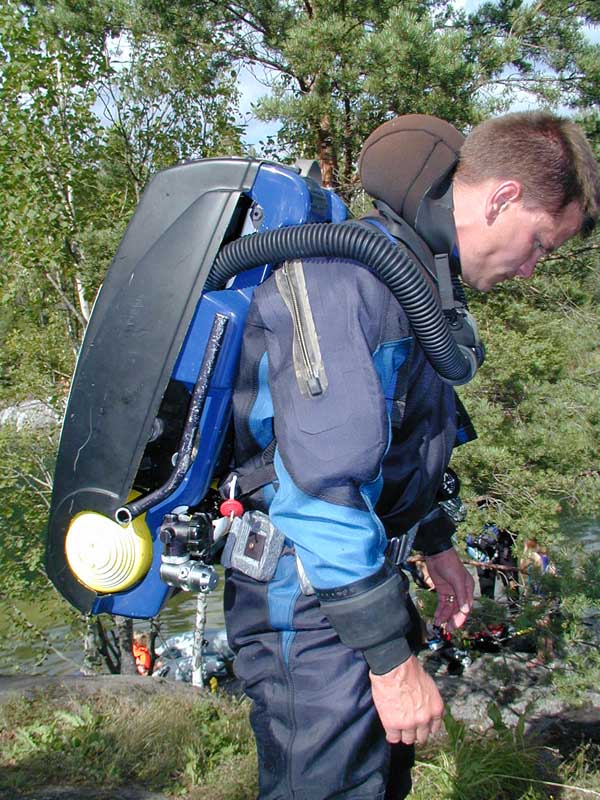 |
The Interspiro DCSC as seen from the right.
Above the weight belt you see the (red) release knob used to separate the
RB unit and the backpack/ harness. Below that you find the tank valve for
the suit supply (1L 200 bar). On newer units there is a second 1L 200 bar
air tank to supply the life vest that is integrated in the backpack /
harness.
Buoyancy is controlled entirely with the suit and the vest is for
emergency use only.
|
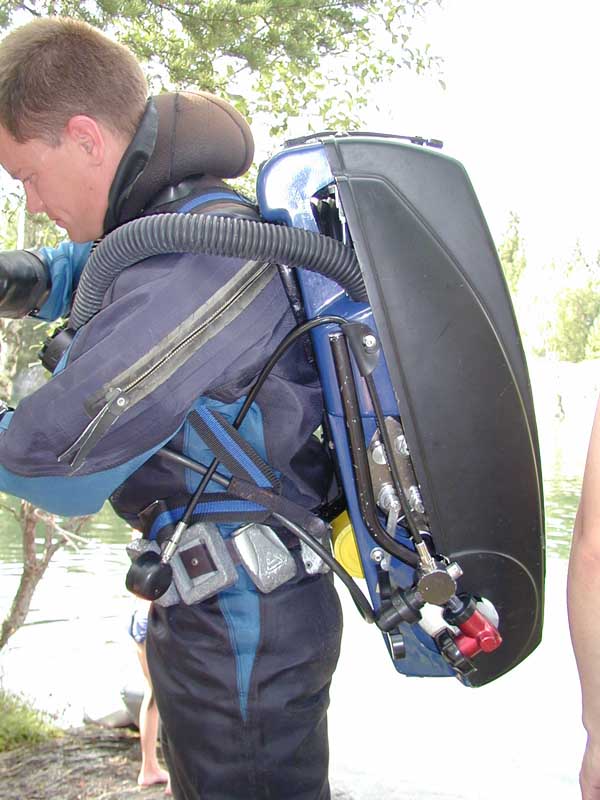 |
The Interspiro DCSC as seen from the left.
Above the weight belt you see the pressure gauge. low on the unit you
see a reserve valve**, the bypass activator, and the tank valve. It looks
messy but is easily accessible also with cold stiff hands.
** The DCSC has a mechanical warning device that is activated when the
gas addition fails for any reason. One of them can be that the reserve
valve shuts of the gas supply (activated at 20 bars) which
results in a warning (breathing resistance, not a complete stop) that
tells you that it is time to release the remaining gas and head to the
surface. For more info see the DCSC
technical page)
|
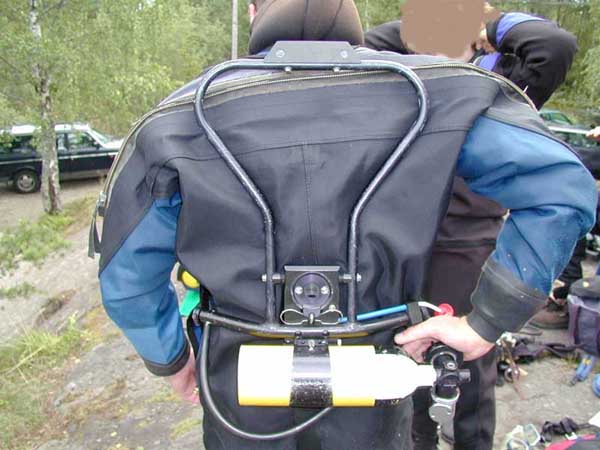 |
The backpack / harness with suit supply tank. Above the
right hand you see the RB unit release knob. |
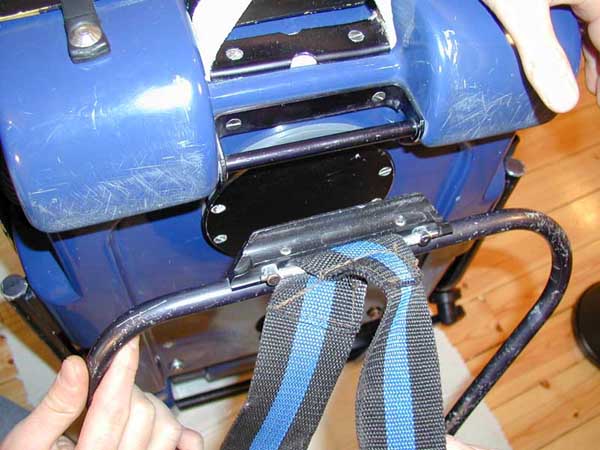 |
The unit is hooked onto a tongue in the backpack harness.
It can hinge and locks then into the circular mechanism seen just above the
tank in the picture above.
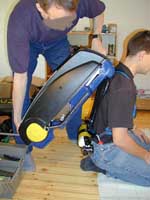 clipping it on
clipping it on
|
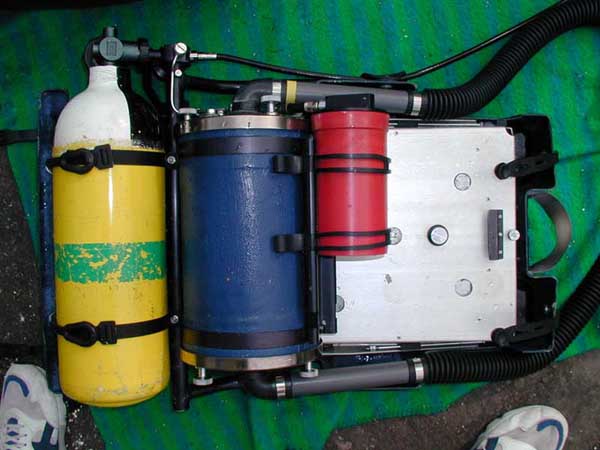 |
DCSC without the cover. On the inside of the cover you find
a complete pre-use checklist.
from left to right:
- Tank, 5L 200 bar, Nitrox 28 or 46% [[colour shall match dosage
chamber (-:]]
- Canister and fresh gas addition mechanism housing
- Dosage chamber (red is smaller, used for 46% fresh gas)
- Breathing bellows
|
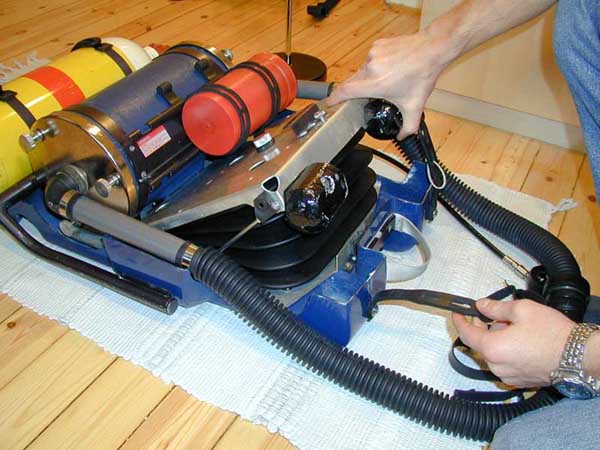 |
Opened breathing bellows where the balancing weights are
seen. The bellow position is measured and used to control the freshgas
addition, se the DCSC technical page
Inside the bellows there is a dump valve that opens primarily when the
bellows reaches a high position but also has a seconday over pressure
release function. |
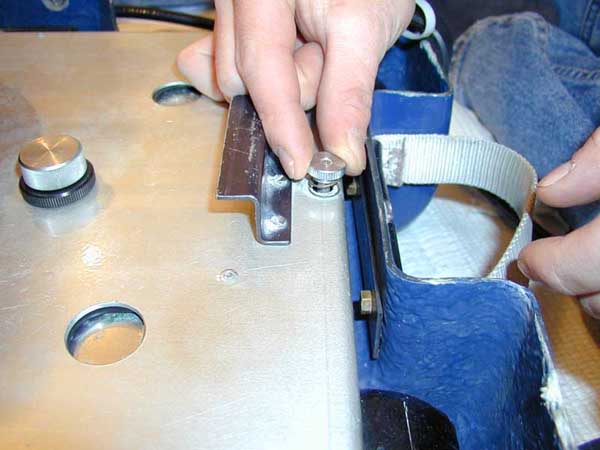 |
The bellows is locked down in the empty position when not in use.
This holds the rather heavy bellows still during transport. |
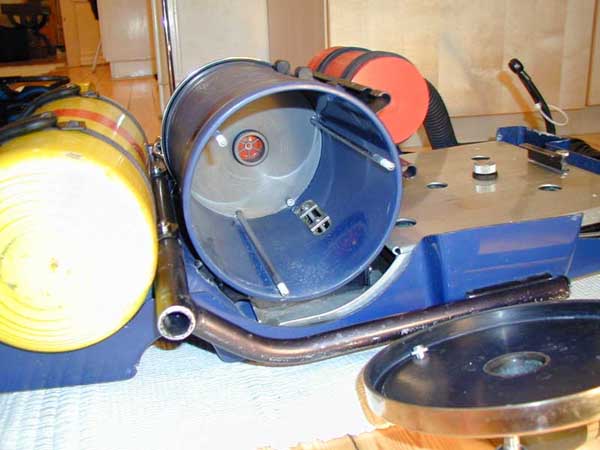 |
Looking into the canister housing. To the right the gas flow
path into the bellows is seen. If water would happen to enter the unit, it
is purged by slowly leaning heads down. The water will then flow into the
bellows where it is expelled through the dump valve (which is mounted in
the bottom of the bellows). |
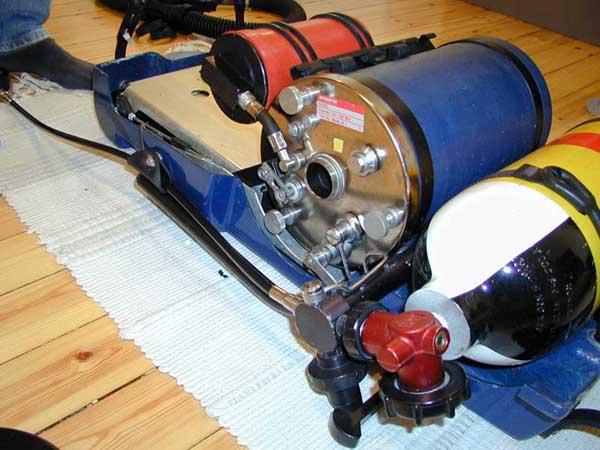 |
The regulator side. A busy picture. From left to right:
- Dosage tank (red) with a short tube
- bellow position sensing linkage (immediately below the short tube)
- breathing hose connection
- bypass valve actuator (below the hose connection)
- reserve valve ( as commented above)
- Tank with matching red stripe (indicating the "rich" 46%
mix)
|
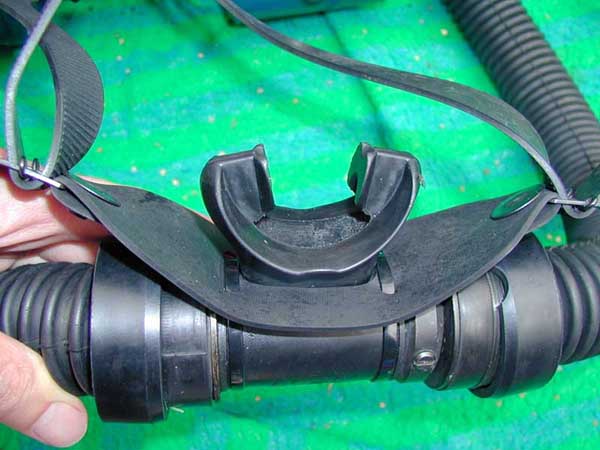 |
Interspiro DSV. You rotate it to close, needs two hands but
works fins.
The DSV is completely closed when closed, both to the RB and to ambient
thus making it slightly less simple to purge than SIVA / Draeger DSV's.
You usually drink the last water. |
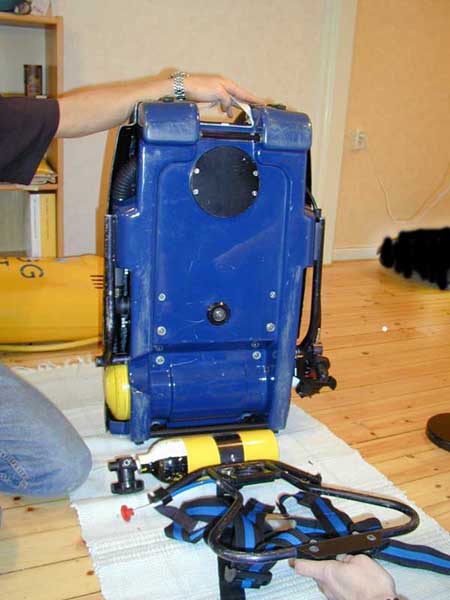 |
DCSC from below without the backpack/harness. On the round
plate the silencer/bubble diffuser is mounted when needed. Below that the
backpack/harness locking device. |
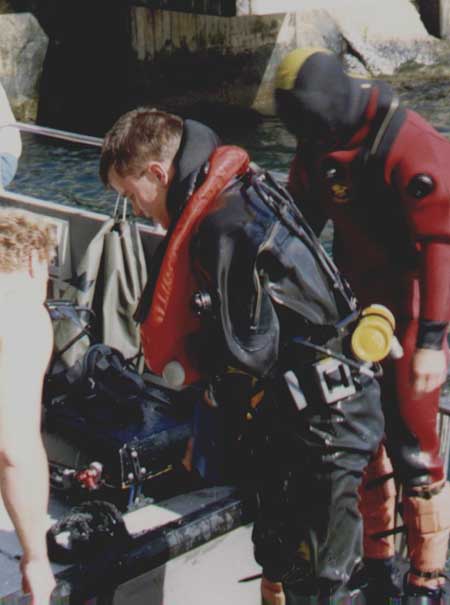 |
When it is time to go to work, the diver dresses completely including the
backpack/harness with suit supply and vest. After pre-dive checks the breathing hoses,
pressure gauge, and DSV (or full face mask, which is more common) are
stored inside the cover. The unit then
looks like a box which you use to sit on when you go to the dive site in a
small RIB in large waves. No risk of breaking anything! When it is
time, you open the cover, pull out the hoses and pressure gauge and go!
When you come back to the boat, someone grabs the unit, you
release it (from the backpack) and then you can easily get back aboard
also when the weather is rough, still keeping suit supply, emergency vest
etc with you..
|




 clipping it on
clipping it on






